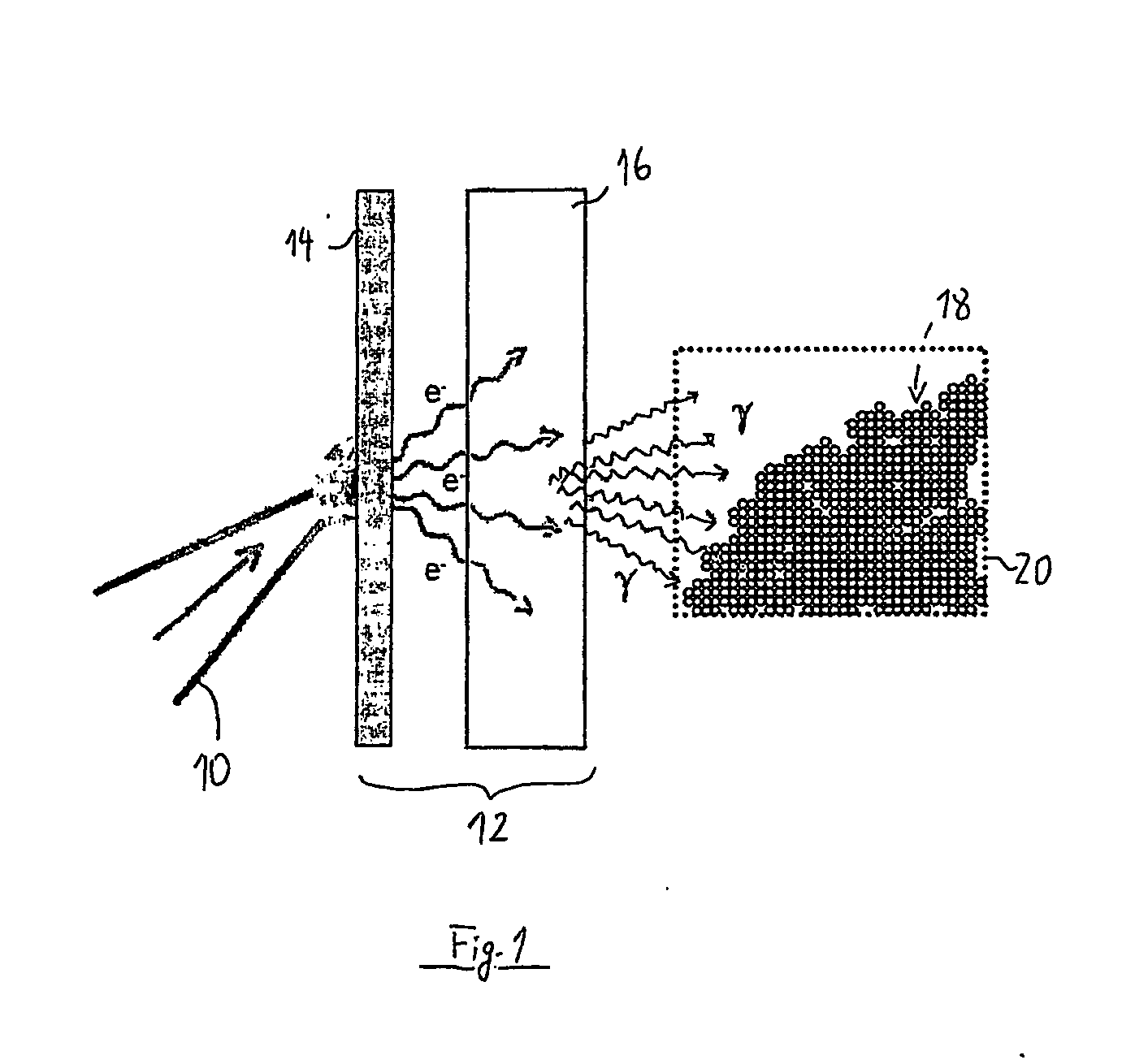Activation and production of radiolabeled particles
- Summary
- Abstract
- Description
- Claims
- Application Information
AI Technical Summary
Benefits of technology
Problems solved by technology
Method used
Image
Examples
Embodiment Construction
[0032] A preferred embodiment of a method according to the invention will now be described in more detail, wherein radiolabeled particles are produced using an activation step involving photon irradiation. The present method comprises two main steps of: (1) preparing particles comprising precursor nuclides, and (2) irradiating the particles in a laser-produced photon irradiating field to activate them into radiolabeled particles.
[0033] I. Preparation of the Particles
[0034] Particles for pharmaceutical use are known as microparticles, nanoparticles, microspheres, microcapsules or beads. They are typically of spherical shape and have dimensions (mean diameters) ranging between 10 nm and 500 μm.
[0035] For internal patient use, the particles should preferably be in a form that is insoluble in “in vivo” conditions, i.e. in cellular media. If particles comprising stable nuclides can be elaborated into particles of a chemical form that is insoluble in cellular media, then there is no ne...
PUM
 Login to View More
Login to View More Abstract
Description
Claims
Application Information
 Login to View More
Login to View More - R&D
- Intellectual Property
- Life Sciences
- Materials
- Tech Scout
- Unparalleled Data Quality
- Higher Quality Content
- 60% Fewer Hallucinations
Browse by: Latest US Patents, China's latest patents, Technical Efficacy Thesaurus, Application Domain, Technology Topic, Popular Technical Reports.
© 2025 PatSnap. All rights reserved.Legal|Privacy policy|Modern Slavery Act Transparency Statement|Sitemap|About US| Contact US: help@patsnap.com

